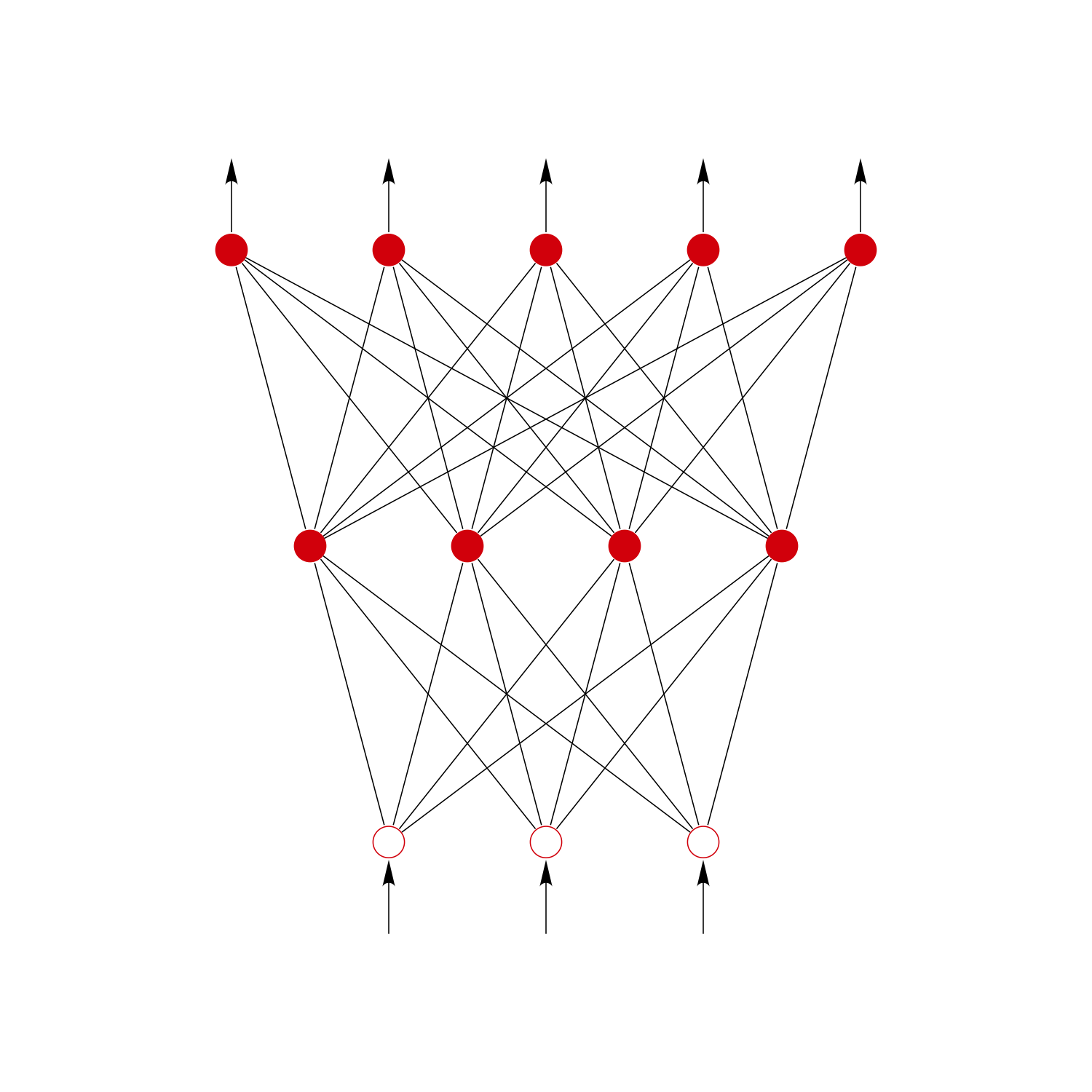
|
A feedforward neural network is a biologically inspired classification algorithm. It consist of a (possibly large) number of simple neuron-like processing units, organized in layers. Every unit in a layer is connected with all the units in the previous layer. These connections are not all equal: each connection may have a different strength or weight. The weights on these connections encode the knowledge of a network. Often the units in a neural network are also called nodes.
Data enters at the inputs and passes through the network, layer by layer, until it arrives at the outputs. During normal operation, that is when it acts as a classifier, there is no feedback between layers. This is why they are called feedforward neural networks.
In the following figure we see an example of a 2-layered network with, from top to bottom: an output layer with 5 units, a hidden layer with 4 units, respectively. The network has 3 input units.

The 3 inputs are shown as circles and these do not belong to any layer of the network (although the inputs sometimes are considered as a virtual layer with layer number 0). Any layer that is not an output layer is a hidden layer. This network therefore has 1 hidden layer and 1 output layer. The figure also shows all the connections between the units in different layers. A layer only connects to the previous layer.
The operation of this network can be divided into two phases:
© djmw 20040426